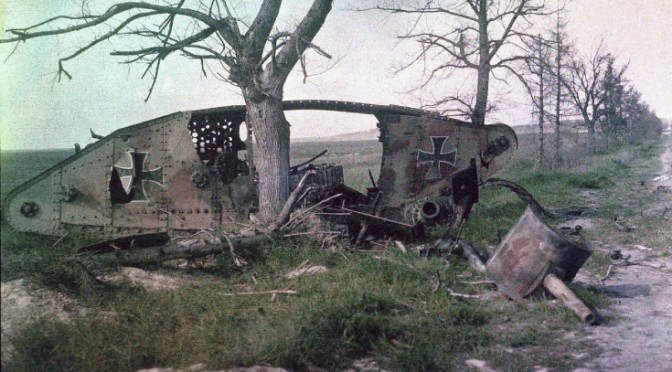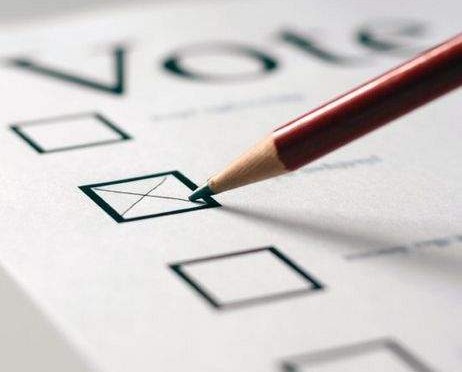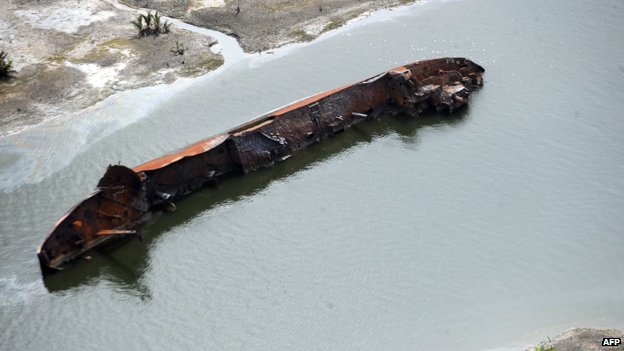It has become fashionable, on the eve of the centennial of the outbreak of World War One, to ask, or worry about, whether it could all happen again. This vague sense of anxiety – this sense of how good we have it now, and how it could all be gone tomorrow – is perhaps fitting, given that it has become an accepted (if debatable) point of history that neither the decision-makers nor the publics of the various European powers expected a prolonged and civilization-devastating war. Such anxiety has a long pedigree: Kipling, writing a poem for Queen Victoria’s Diamond Jubilee a mere decade and a half before the war broke out, chose to quietly shelve his now-infamous imperialist tribute, “The White Man’s Burden,” for another occasion, in favor of publishing the more sombre and (at the time) jarring “Recessional,” which reminded its reader that all glory is fleeting and God alone is permanent (“Far-called, our navies melt away/On dune and headland sinks the fire/Lo, all our pomp of yesterday/Is one with Nineveh and Tyre…”).
In fact, the war’s outbreak and subsequent course probably were predictable in advance, and if anything reflected what we would now call a failure of analysis, either on the part of the leaders of the European states, or on the part of their people. The prescient military analyst Ivan Bloch had warned that carnage, stalemate, and industrial exhaustion were practically inevitable in modern warfare; the general staffs on what were to become both sides were at least dimly aware of this reality. Diplomatically, Europe had bounced from crisis to crisis in the preceding decade. Its people were all trained for war and (particularly, but not only, in Germany) cheered their respective militaries and military leaders with a fervor now reserved for football fans. One would have had to be blind not to see it coming.
Millions were. Millions paid.
In that spirit, it would be foolish indeed to believe that major war is now a thing of the past, or that a terrible catastrophe could not befall us. Indeed, the belief that such catastrophes are a thing of the past appears to be a prerequisite for their occurrence. And the rise of other military powers relative to the U.S. should indeed give us pause: this is the sort of time when we should be worried.
But for all that, there are key differences between the modern world and the world of 1914. They suggest that, at a minimum, the kind of wars we have seen in the past are unlikely to repeat themselves. Something altogether different awaits us. This in itself is ominous, because there are no recent historical models to guide us or point the way; avoiding repeating the past is not as simple as learning from a mistake. This, too, is a lesson of the past: World War One did not resemble the Napoleonic Wars, and Europe in 1914 did not resemble Europe in 1789. But understanding the present in light of the past is necessary all the same.
I therefore submit, for consideration, some key differences between 1914 and now.
1. We have nuclear weapons now, and we don’t make light of them. Two points must be understood. In the first place, invading the home territory of an adversary in a modern war between great powers will sooner or later (and probably sooner) result in the destruction of both. Notwithstanding innumerable debates about when, exactly, it would be “rational” to employ nuclear weapons in self-defense, the presence of nuclear weapons places an upper limit on warfare between the major powers. Marching on Paris (or Beijing, or Moscow, or Washington, or Brussels) is less an inevitable goal of military operations than an exercise in playing with fire (or plutonium). And, in the second place, this point is understood by most of the decision makers involved: the carnage on the Somme was a distant hypothetical in 1914; the devastation of Hiroshima can be viewed online.
Of course, decision makers can miscalculate. Just as the European political leadership in 1914 and after were apparently unaware of how to stop what had been started or how bad things could get, so too it is difficult in a crisis for modern decision makers to know where the lines are. That, of itself, may point the way to where things will (may?) someday go wrong. The possible future addition of other nuclear states to the mix will merely make things more complicated.
2. It is more difficult to hold onto conquered territory now, and less useful to do so. A mainstay of European warfare for probably two centuries or more prior to World War One had been the assumption that land could be taken for sovereign use, that a treaty at the end of the war would legitimize the winner’s gains, and that docile civilians would sit by and not care too much to whom they ultimately would pay taxes. In fact, the Napoleonic Wars (which saw the first nationalist partisans) and the Franco-Prussian War (in which German troops had to contend with irregular “franc-tireurs”) had already called this issue into question by 1914, and it is significant that Bismarck, in an earlier era, sought to avoid peace treaties that required Germany to integrate too many non-Germans. But whatever problems European states had in this area by 1914 are multiplied tenfold now.
The world is awash in cheap former Soviet weaponry, and it is all too easy for a rival power, if it decides it is worth its while, to arm an insurgent faction anywhere where government is less than perfectly stable. The tactics and strategy of insurgent warfare were perfected in the wake of World War Two by Mao Zedong, Ho Chi Minh and Vo Nguyen Giap, the Algerian FLN, and others; mass-casualty terrorism was perfected by Al Qaeda. As Thomas Hammes notes in The Sling And The Stone, modern communications technology and cheap transportation make coordinating an insurgent group much easier. Since the Arab Spring and the Euromaidan, a viable model exists for coordinating quasi-peaceful, quasi-violent opposition to a government; it is now more dangerous than ever for a government to be both weak and illegitimate at the same time, and this is the position a conquering force effectively starts from. Twitter, YouTube, and a sympathetic globalized media ensure that atrocities committed to quell a rebelling populace will receive widespread attention, even as they allow protesters to coordinate their actions. If a state does succeed in overcoming all of these problems, it is less certain now than in 1914 (notwithstanding anything else one might say) that its actions will have international legitimacy. And, needless to say, the destruction wrought by resistance to occupation renders any conquered territory inherently less valuable.
This is not to say it is impossible for a state to conquer territory in the modern world and hold it. It is to say that the costs of doing so have gone up and the benefits have gone down. This, rather than anything the international community did, may be the main reason Vladimir Putin chose to overtake parts of Ukraine by fomenting unrest and sending covert thugs rather than by force majeure: a country roughly the size of the American Midwest with 44 million people is difficult to swallow even in part, and certainly not with only a few divisions.
But it is also easy to see how these changes could pave the way for the next conflict. If invading another great power’s territory is out of the question, indirect methods may be the preferred course. Therein may lie danger.
3. There is no military conscription in most great powers today, and there are demographic and technological reasons why it is unfeasible. In Europe in 1914, every able-bodied male citizen of every great power except Britain and the U.S. performed military service upon reaching adulthood, and was subject to reserve service and periodic refresher training thereafter. Older men carried military identity cards that told them where to go if called up. This was an accepted way of life in virtually every European state, and there was even a movement in favor of conscription in Britain. It did not dampen public enthusiasm for war when war came, and may have inured the publics of the various states to war’s hardships.
Except for Russia, no great power employs military conscription today. Nor can they. As Edward Luttwak has noted, low birthrates and smaller families mean that losses are more keenly felt in wartime; this of itself makes drafting eighteen-year-olds impracticable; indeed, historically wars have been fought by states with rising populations, not populations that have plateaued or are falling. In the west, public cynicism over Vietnam and Iraq further dampens enthusiasm for any sort of civic militarism that imposes costs on the general public.
If the teenagers of the respective great powers are reluctant to serve, the militaries in question are reluctant to receive them: not only are discipline problems associated with unwilling recruits, but mass conscription of its nature implies a choice of quantity over quality – in modern, technologically reliant armies, training a soldier to use his equipment well takes more time than the average conscript would normally spend in the army, and requires more training resources than would be available on a universal basis. The Russian Ground Forces’ experience with conscription is the exception that proves the rule: draft-evasion is rampant, morale is low and discipline is often shoddy (a situation abetted by horrific hazing practices), and readiness is affected by the need to achieve technical proficiency that cannot be learned in the time available.
Some of the factors driving the trend towards professionalism and away from military conscription might be reversed, while others are more permanent – but the kind of national mobilization that was part and parcel of early twentieth century warfare is not possible at the moment. What applies to manpower applies to machines as well: as is readily apparent in observing the procurement process for ships and aircraft, the replacement of lost equipment will be a more complicated matter in any future war than it was in 1914.
It is ambiguous what this might mean for great power war in the future. On the one hand, it is indicative of a more pacific-minded public; on the other hand, it means that the costs of such a war will be borne by a few until they are borne by many.
4. The great powers are broke. With the possible exception of Russia, all of the major powers are carrying huge loads of public and private debt – including national debts, provincial and municipal debts, and private debt. (Yes, this includes China; it’s just that in the latter case the figures are more carefully hidden, which is in itself terrifying.) Economic growth is slowing across the developed world, including, most ominously, in China, which relies on double- or high-single-digit growth to appease its restive population and provide jobs for its surfeit of young men (the combination of the One Child Policy and traditional sexism having run its logical conclusion).
In financial terms (and solely in those terms), the world today more closely resembles the world before World War Two than it does the world before World War One. This is not necessarily reassuring.
5. Finance is globalized. The great powers’ national debts are publicly traded. It is tragically amusing to note that a war with China would mean the U.S. would have to find a new foreign creditor, and quickly. This is in stark contrast to the financial world of 1914, in which governments overwhelmingly owed money solely to their own citizens, and the purchase of government debt in wartime could be sold to the public as a patriotic duty or contribution.
6. And finally: people are older, richer, more heavily taxed, more heavily subsidized, and more cynical. It’s quite obvious, but it must be said: a prolonged war today would require financial sacrifice from the publics of the various great powers that they would not easily make. Government spending and taxation relative to private income is stratospheric compared to 1914 levels, and in the West the overwhelming majority of this spending is repaid to the public at large via entitlements. The percentage varies from great power to great power (it is higher in Europe), but it is high across the board. All of the great powers have aging populations that are, on average, much older than in 1914. All of their populations, in a period of prolonged great power peace, have structured their lives (particularly, the size of their houses and the size of their debts) on the assumption that current levels of income, taxation, and benefits will be roughly stable. The sacrifices necessary to pay for a war (even the economic damage caused by a disruption of trade in the event of a war) might be less severe than in 1914, but would be felt more keenly by publics that are not only used to comfort but in fact rely on it. (One cannot make one’s house smaller and easier to pay for, magically reduce one’s mortgage, or easily accept early twentieth century levels of medical care.)
Such sacrifices are bearable if a war is about something. But whereas in 1914 the publics of the European powers believed in all too many cases that the nation was an end in itself, modern publics are less idealistic. Particularly in Europe, but also in the U.S. and to some extent in China, if only because of the experience of two world wars, let alone the more recent experiences of Vietnam and Iraq, calls to sacrifice for the nation when there is money to be made and a comfortable life to be lived will ring hollow, particularly if the war is not about anything. The levels of nationalism that drove the world to war in 1914 are not only absent today, but are often the subject of derision.
This is not to say that war is impossible for this reason, either. As was the case before World War Two, we may yet decide that war is not worth fighting only to find ourselves in a situation where we have no choice. Cynicism and complacency are rarely wise.
But it is to say that today is not yesterday. Those who fear that 2014, or the coming years, will be like 1914 can probably rest easy. Today’s problems are not like yesterday’s.
They are different.
Martin Skold is currently pursuing a PhD in international relations at the University of St. Andrews, with a dissertation analyzing the political strategies of states engaged in long-term security competition.





